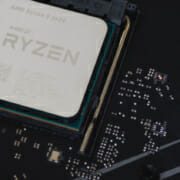App Performance: How To Tell If Your App Is Succeeding
If you’re not continuously monitoring app performance, you won’t have a clear picture of app quality and success. And that means you won’t know if your app meets or exceeds user expectations. Moreover, you can’t correctly evaluate your app since you’re not measuring its key performance indicators (KPIs).
So, what should you do to ensure you know everything about your app that matters? And more importantly, how do you do so without hurting your brand? After all, there’s nothing worse than releasing an app — even as a beta for testing purposes — that delivers a shoddy user experience.
Read on as we’re about to reveal the steps you need to take to monitor app performance — the right way!
1. Implement App Performance Metrics For App Quality
First and foremost, you need to know if your app runs flawlessly or is a buggy mess that upsets users. Thus, you’ll need to implement the following app performance metrics that will furnish you with reports in real-time:
- Crash analytics – To help you identify when and why app crashes happen
- Performance – Collect data related to load speeds, device configurations, operating systems, and screen resolutions
- In-app feedback and ticketing – An effective way to gain feedback and respond to app issues without hurting your brand
- Testing – Use an SDK such as Firebase to build and test apps across multiple devices and platforms
2. Measure KPIs That Determine App Success
You’ll also need to know how well your app is performing in the app stores. And there’s quite a bit of data that you’ll need to collect and analyze, such as follows:
- Number of downloads – This is one of the most important KPIs and helps determine app growth or stagnation
- Reviews and ratings – Positive reviews and ratings bolster downloads as users often look at these first before trying out an app
- Track active users – It’s crucial to know how many users continue using your app after they download it from the store
- The average duration of user interaction – User engagement directly correlates with higher usage times
- The frequency of user sessions – This is another important metric that determines user engagement
- Retention rate – This metric helps determine whether or not users remain interested in your app
- Churn rate – Another important metric that indicates how many users leave an app
3. Mobile Game Considerations
All app performance metrics discussed above also apply to mobile games. Given the viral nature of mobile games, it’s also crucial to measure the K factor. So, what is the K factor, and how does it impact a mobile game? In a nutshell, the K factor refers to the number of users that talk about your game and recommend it to others.
An easy way to work out the K factor is with this simple formula (i = average number of invitations sent by a user, and c = conversation rate of those invited):
k-factor = i*c
In Conclusion
Always implement app performance metrics, as these will help you gain a 360-degree view of your app. The more data you collect about your app’s performance and how users interact with it, the better informed you’ll be to make the right changes — and when they’re necessary. Contact NS804 to learn how we’ll help you create phenomenal apps that truly succeed!












 https://www.pexels.com/photo/person-holding-silver-android-smartphone-50614/
https://www.pexels.com/photo/person-holding-silver-android-smartphone-50614/
Leave a Reply
Want to join the discussion?Feel free to contribute!